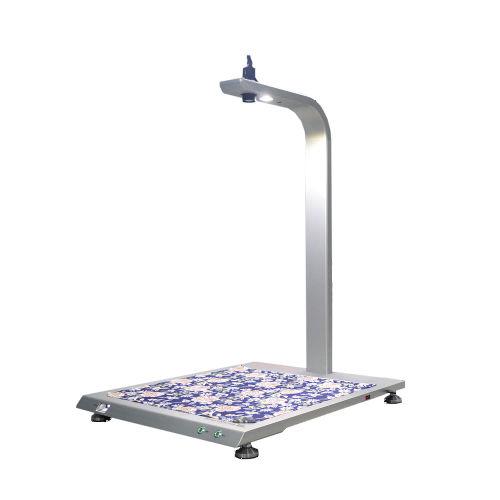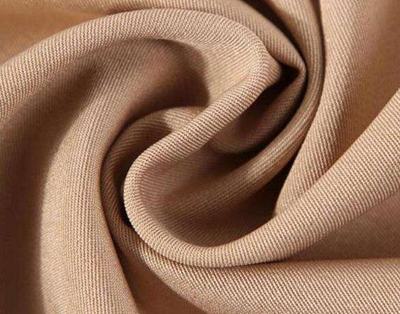Fabric shrinkage is the percentage increase in length when fabric is pulled. It is also known as elastic elongation or elongation. And it measures a fabric’s elasticity. It describes the fabric’s ability to deform when forces are applied to it.
The stretch of a fabric has a significant impact on the fit, comfort and durability of a garment. Stretchy fabrics are good for sportswear, swimwear, and other clothes that need elasticity. But, fabrics with low stretch are good for formal wear or dresses that need to keep their shape.
Water, heat, and other factors affect fabric. After the stimulus, fibers move from a temporary to a stable state. In the process, they expand. The degree of expansion is the expansion rate. The fabric’s expansion rate depends mostly on its materials. It also depends on how they are processed. For example, in shaping the strong stretch hard pull, it raises the fabric’s expansion rate. Also, the density of the warp and weft will produce different elongation. Usually, the warp density is higher than the weft density. So, the warp shrinkage is more than the weft shrinkage. But, the weft shrinkage is more than the warp shrinkage. By testing, we can get better data on the expansion rate. We can use this data to scale the length and width of the board and to match the garment specs to the design. Therefore, the test items relate to the process of garment processing. Generally there are the following items:
1、Natural shrinkage
Natural shrinkage refers to the fabric without any man-made role and influence, in the natural state by the air, moisture, temperature and the impact of internal stress produced by the expansion and contraction changes. In woven fabrics, the different fibers in the material cause uneven expansion and contraction when they twist the yarn during shearing, leading to the loss of mutual traction and elongation, which differs from knitted fabrics.
The test method is: first of all, the raw material from the warehouse to take a package in a horse, measure its length and width of the width of the door, the measurement of the data for the record, and then the whole piece of raw material disassembled and shake loose, in the absence of any pressure, static at room temperature 24h, followed by a re-test to calculate the expansion rate of the fabric.
2、Temperature shrinkage
In the garment processing technology, commonly used water immersion, water spraying, dry ironing, wet ironing and other methods of fabric processing. These external factors shrink the fabric, so when compared to the untreated size, we refer to the wet heat shrinkage ratio as the shrinkage rate.
To understand the law of this shrinkage, you must conduct the fabric shrinkage test after performing these processes.
(1) dry ironing shrinkage test.
Ironing fabric with an electric iron in dry conditions causes it to contract due to the heat, leading to dry ironing shrinkage. The test method is as follows.
Sampling.
Cut more than 1m from the head or tail of the fabric to account for the significant tension change at the beginning of weaving. Then, take a 50cm length of fabric, trim both sides to ensure accuracy in testing, and record the length and width data.
Dry ironing temperature conditions.
Printed and dyed cotton fabrics: 190~200℃.
Synthetic fibre and blended printed and dyed fabrics: 150~170℃.
Viscose fibre printed and dyed cloth: 80~100℃.
Printed and dyed silk fabrics: 110~130℃.
Woolen fabrics: 150~170℃.
Dry ironing time.
According to the temperature conditions of each type, iron on the specimen for 15s and leave it to cool down.
Test.
After cooling, measure the length and width of the specimen, and then calculate the shrinkage of the fabric.
(2) Test for wet ironing shrinkage.
Wet ironing shrinkage refers to the fabric to give moisture to the ironing of the resulting shrinkage. There are two types of wet ironing shrinkage test methods: the water spray ironing test method and the cover wet cloth ironing test method, which we can categorize based on different processes.
①Water spray ironing test method.
Sampling.
In the head or tail from the raw material more than 1m, take the length of 50cm as a sample, and remove the cloth on both sides of the road.
Wetting conditions.
Spray the sample with water, the moisture should be evenly distributed.
Ironing conditions.
Iron the specimen with an electric iron and iron it back and forth, the time control in the dry is appropriate.
Measurement and calculation.
After the specimen is dried, measure its length and width, and calculate the shrinkage rate.
② Ironing test method covered with a damp cloth.
Sampling.
Same as the water spray ironing test method.
Temperature conditions: Same as the Spray Ironing Test Method.
Same as the water jet ironing test method.
Wet condition.
Soak a de-sized, woollen, white, plain cloth in water and wring it out.
Ironing Conditions.
Put the wet cloth over the specimen, according to the temperature conditions, use the iron to iron the specimen back and forth, the time control in the cover cloth ironing dry as appropriate.
Measurement and calculation.
After the specimen cools down, measure its length and width, and calculate the shrinkage according to the formula of wet ironing shrinkage. (3) Water immersion shrinkage test.
Water immersion shrinkage refers to the degree of contraction produced by letting the fibres of the fabric completely immersed in water, giving full moisture absorption. The test method is as follows
Sampling.
The method is the same as the dry ironing test.
Wetting conditions.
The specimen is completely immersed in warm water at 60°C, stirred by hand so that the water enters the fibres fully, and then removed after 15min, then stroked dry and dried at room temperature (not wrung). You can also conduct this test using a shrinkage machine.
Measurement and calculation.
Measure the length of the specimen and calculate the shrinkage rate.
Factors of fabric shrinkage
Shrinkage and clothing fibre characteristics, fabric structure and production and processing technology has a close relationship.
(1) Fibre factors
During the spinning, weaving, dyeing, and finishing process, different types of fiber fabrics undergo varying degrees of stretch, causing the warp and weft threads to elongate and deform. Some of this deformation may remain permanent, even after a long period, leading to the formation of hidden contraction forces from residual internal stress within the fabric. When water soaks into the fabric, it penetrates the internal fibers, putting the fibers in a natural state that promotes the recovery of elastic deformation and prevents fabric shrinkage. Different textile fibre shrinkage degree is not the same.
(2) Density factor
In many fabrics, due to different density of yarn, shrinkage performance is not the same. High density fabrics such as wadatan, khaki and other warp yarns arranged in a dense and tight, when subjected to damp heat, the warp yarn does not have much leeway, so that the weft yarn shrinkage increase is not large, shrinkage is small, weft density of sparse fabrics, when subjected to damp heat because of its arrangement of loose and can be sufficiently expanded, so that the warp yarns to rapidly increase the degree of zigzagging, and its shrinkage will be heavier.
(3) Fabric yarn factors
Fabric yarn thickness is different, shrinkage rate is different. Yarn thick fabrics such as denim, shrinkage rate is large, yarn fine fabrics such as plain cloth shrinkage rate is small.
(4) Dye factor
Clothing fabrics in the finishing process into the pulp more, the fabric shrinkage rate is high. After the sizing process of clothing fabrics reduces the degree of curvature and enhances stiffness, washing removes the top layer of pulp, increases fiber voids, and enlarges water absorption and curvature, resulting in an increase in the shrinkage rate.
(5) Process factors
Fabric fabrics in the dyeing and finishing process, including fabric ironing, will be subject to a certain degree of tension, causing fabric elongation. But this elongation is temporary, once the fabric again under water, it will be in the water under the role of dissolving up, lose the tension caused by external forces, along with this change, the fibre will also appear corresponding retraction, caused by fabric shrinkage.
Calculation method and steps of shrinkage rate of garment pattern making
(1)Wash as required
When a customer places an order, check if they washed the garment in water or fabric. One can also see the customer’s clothing samples. For washed garments, there is obvious wrinkling on the surface of the open line, just like the side seams of the jeans we usually wear, and there is a change in the depth of the lines of the fabric. If it is washed in fabric, there is no such phenomenon. You do not need to control fabric wash shrinkage. After receiving the bulk fabric, go to the laundry and wash it as required. Control the fabric shrinkage.
(2)How to wash garments
There are several washing methods for readymade garments, such as normal washing, enzyme washing, sand washing, stone washing, etc. Receive a sample of the bulk fabric from the customer, at least 5 metres above the whole fabric. Cut three pieces of fabric 1.2 metres long and 1 metre square, and mark the fabric with a reserve line.
(3)Test fabric
According to the customer’s request, inform the washing factory of the washing requirements. After washing, give the customer a copy of the tested fabric (some customers also need sleeve samples or trouser leg samples) and have them keep a copy for themselves.
(4)Measuring fabric size
Fabrics tested by the laundry must be thoroughly dry and must not be damp when touched in the hand. Measure the size of the fabric on the top line. We use all three of the above fabrics for testing to ensure the accuracy of the shrinkage rate. You can take intermediate values for comparison and reference. For example, the longitudinal size (straight grain) measured at 97% of the length indicates that the longitudinal shrinkage rate of the fabric is 7%; the transverse size (horizontal grain) measured at 92% of the length indicates that the transverse shrinkage rate of the fabric is 8%.
(5)Calculation of plate shrinkage
According to the horizontal and vertical shrinkage measured above, start using the standard method of calculating the plate shrinkage rate for clothes washing standards, and when making the sample, the required garment length dimension is 78cm , so when making the sample,
①78cm × (1 + 3 percentage points) = 80.34cm;
② 56cm × (1 + 8 percentage points) = 60.48cm.
When the factory receives the correct bulk fabric, they must retest it to prevent errors. In each batch, cut each roll of fabric to the size of 1.2 metres door width and wash it again. If there are several batches with shrinkage differences greater than 3 to 5 cm, you must make two or more samples.
Here, testers must repeatedly test the fabric for shrinkage and never fear trouble. Sometimes, we may need to create different shrinkage versions for the same garment because the fabric shrinks differently.
For more information on textile testing methods/standards
or textile testing machines, contact us:
What’s App: +86 180 2511 4082
Tel: +86 769 2329 4842
Fax: +86 769 2329 4860
Email: medium@chiuvention.com


